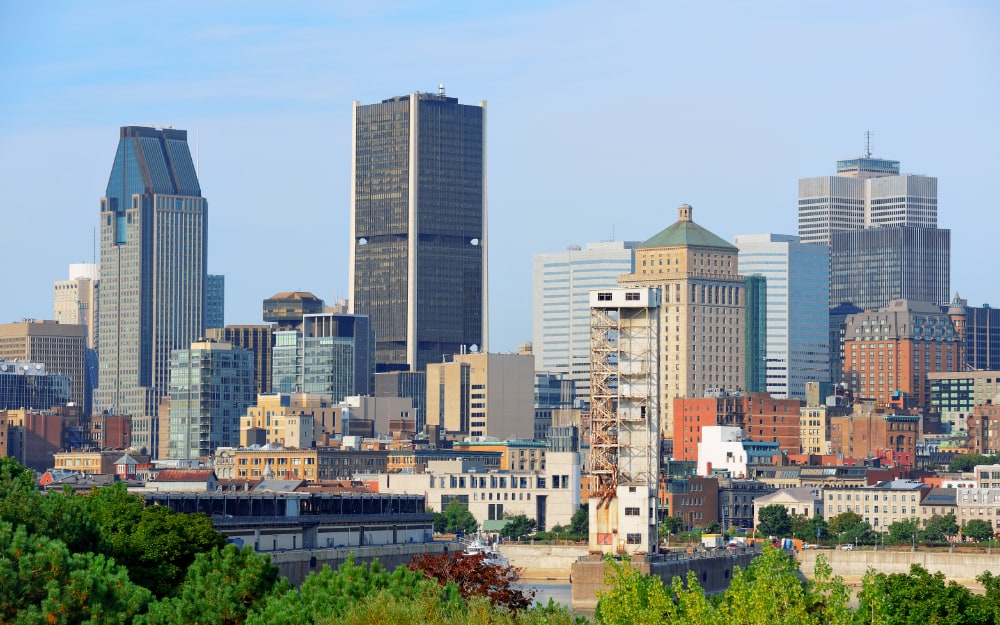Population in Urban Area, now
- World: 107th
- North America: 16th
- Canada: 2nd
Population in City Area, 2022-08-24
- World: 165th
- North America: 3rd
- Canada: 2nd
Montreal Urban Area Population Graph
Montreal Population Review
Montreal is the second-most populous city in Canada and the only major city in North America where French is the official language. It is one of the five largest French-speaking cities in the world, with Paris, France being the first.
The population of Montreal’s urban area is 4.2 million people and the city proper has 1.6 million people calling it home. Until the 1970s, Montreal was the largest city in Canada until Toronto surpassed it. While Montreal’s urban area is predicted to grow to 4.7 million residents by 2035, the city’s growth rate is behind the national average.
A city unified
In 2002, Montreal’s borders rapidly expanded when the city was merged with 27 nearby municipalities on the Island of Montreal to form a unified city. A lot of these mergers were later rescinded since the move was quite unpopular in several areas. Two years later, 13% of the population of the island voted to leave the unified city, with only 15 total municipalities eventually staying.
Post-secondary institutions galore
Even though Montreal is not a massive city, it still has 11 university-level institutions in the city, four of which are world-class. These post-secondary institutions have a combined student body of 180 thousands people and has one of the highest concentrations of graduate students in any city in North America. Students in Montreal also pay the cheapest tuition in the whole country.
An immigrant-friendly city
Montreal is a very diverse city. 34% of the population of Montreal and 22.6% of the population of Greater Montreal are members of a visible minority. Montreal has been a destination for immigrants for several decades and 70% of the foreign-born population living in the province of Quebec call Montreal home. There are more than 120 cultural communities represented in Montreal, with the main countries of birth being Europe, Asia, and Africa.
A center of Catholicism
Montreal has historically identified as a center of Catholicism in North America. It boasts some of the most stunning cathedrals and churches on the continent and Roman Catholicism is the most widely practiced religion in the region. About 65% of the Montreal population is Christian, with 52% being Catholic. Much of this has to do with the French settlers who founded the city and brought their religion with them. However, weekly church attendance is one of the lowest in the entire country. Montreal also has a large Muslim and Jewish population, with 154,000 people identifying as Muslims and 36,000 identifying as Jewish.
The most bilingual city in the country
Montreal is a French city and French is the official language. It is the language most spoken at home, with 49.8% of the population listing it as the main language they communicate in when home. Only 22.8% of the population list English as their main language, with the last 18.3% of the population speaking another language at home. It is considered the most fully bilingual cities in Canada and in Quebec. Almost 59% of the population can speak both English and French with ease and signage, restaurant menus, and metro stops are all listed in both English and French. However, Quebec’s robust language laws mandate that French must be placed first on all signage. Montreal is the second largest primarily French-speaking city in the entire world, apart from Paris.
An underground city
Montreal has a unique feature that allows visitors and tourists alike to avoid the city’s harsh winter weather: the Underground City. This series of interconnected tunnels run beneath the city for over 32kms. When the weather turns frigid (and Montreal is especially known for it’s hard winters), there are over 500,000 people who use the tunnels on a daily basis. These brightly lit corridors connect shopping malls, universities, museums, banks, hotels, and run off several metro stations.
